
The Ultimate Guide To Cleaning And Maintaining Fine Jewelry At Home
Do you find your fine jewelry looking dull and dirty over time?
Keeping that engagement ring or gold necklace sparkling can be a challenge.
Did you know that using mild dish soap and warm water is an easy way to clean them at home?
In this guide, you’ll learn quick tips to maintain your jewelry’s shine without professional cleaning.
Note: Caring for your fine jewelry at home can seem like a delicate task, but with the right knowledge, it can become a rewarding part of your jewelry ownership experience.
This comprehensive guide will walk you through safe and effective methods for cleaning various types of jewelry, from precious metals to gemstones, and offer tips for proper storage and maintenance.
While DIY care is valuable, remember that professional expertise can be crucial for preserving your cherished pieces.
Our skilled team at Nelson Estate Jewelers offers professional cleaning and maintenance services, and we’re always happy to provide personalized advice on keeping your jewelry looking its best, whether you’re maintaining a family heirloom or a recent acquisition.
Key Takeaways
- Use mild dish soap and warm water to clean fine jewelry. Avoid harsh chemicals.
- Store each piece in a separate compartment to prevent scratches. Use silica gel packs to keep moisture away.
- Clean regularly by gently scrubbing with a soft-bristled brush and drying with a lint-free cloth.
Essential Cleaning Techniques for Fine Jewelry
Cleaning your fine jewelry at home requires a gentle touch. You don’t need fancy tools; just some common household items will do the trick.
Using mild dish soap and warm water
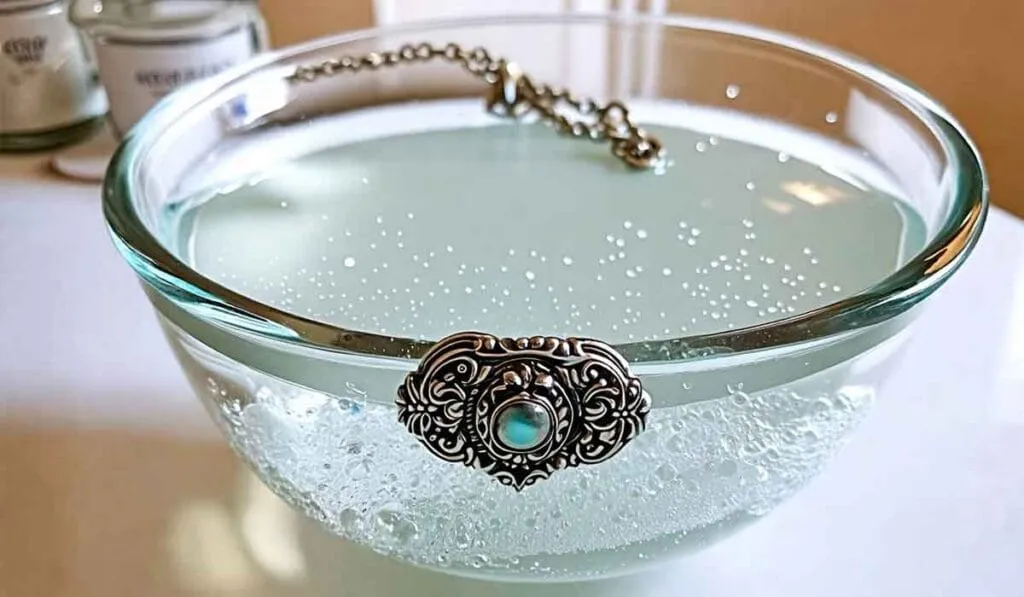
Cleaning fine jewelry at home can be easy. A mix of mild dish soap and warm water works well.
- Mix the solution: In a small bowl, combine a few drops of mild dish soap with warm water.
- Soak the jewelry: Place your jewelry in the soapy water. Let it soak for about 15-20 minutes.
- Scrub gently: Use a soft-bristled toothbrush to remove dirt and grime from those hard-to-reach places.
- Rinse thoroughly: Swish each piece in clean, warm water to remove any soap residue.
- Dry with care: Pat the jewelry dry with a soft, lint-free cloth.
This method helps keep your gold and silver jewelry sparkling without harmful chemicals or ultrasonic cleaners.
Employing soft brushes and cloths for gentle scrubbing
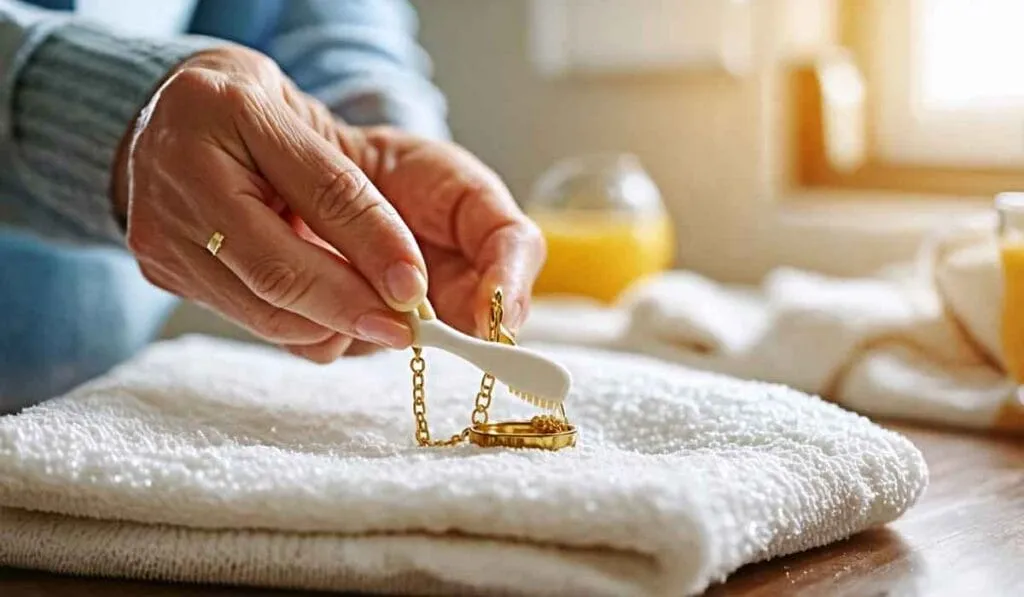
Using soft brushes and cloths can keep your fine jewelry looking beautiful. Gentle scrubbing is key to removing dirt without causing damage.
- Select a Soft Brush: Use a baby toothbrush or an eyebrow brush. They have gentle bristles, perfect for delicate pieces.
- Dampen the Brush: Moisten it with warm water mixed with mild dish soap. Avoid soaking the whole piece in the solution.
- Gently Scrub: Lightly scrub grooves and crevices. Be careful around prongs holding gemstones to avoid loosening them.
- Rinse Thoroughly: Use lukewarm water to wash away any soap residue. Leftover soap can cloud your gems.
- Pat Dry with Cloth: Use a lint-free cloth to dry the jewelry carefully. Do not rub harshly; gentle pats are enough.
- Polish if Needed: Take a separate clean cloth for a final polish to bring back shine.
These steps ensure that your gold jewelry stays brilliant and scratch-free.
Now that you know how to scrub gently, let’s look at best practices for jewelry maintenance…
Best Practices for Jewelry Maintenance
Start by setting up a regular cleaning schedule. Always use proper storage methods to keep your jewelry safe and shining like new.
Regular cleaning routines
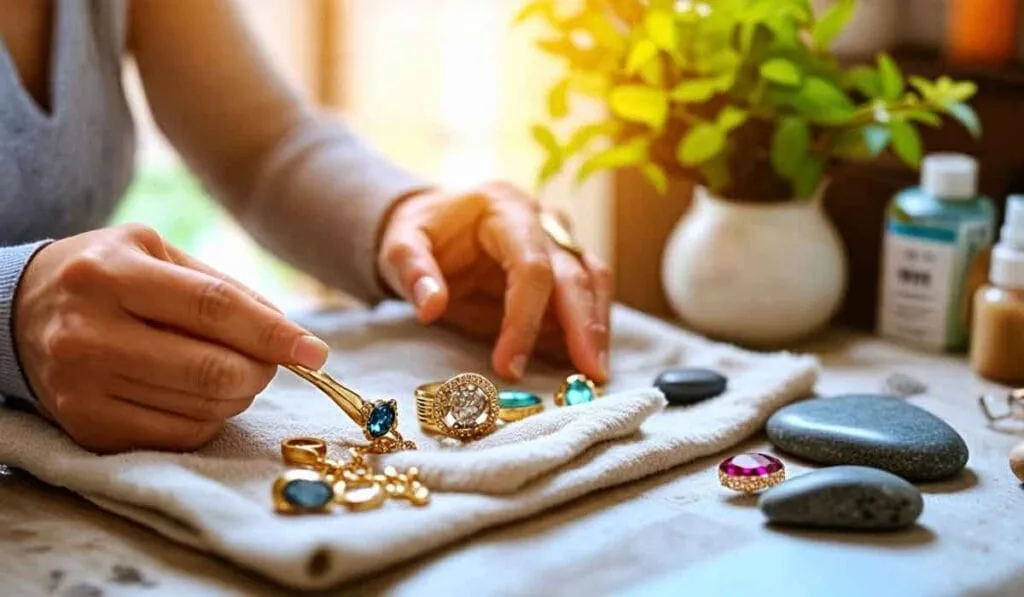
Polish your jewelry every couple of weeks.
This keeps it shiny and beautiful. Use a mild dish soap with warm water for best results.
Dip a soft cloth in the solution, then wipe each piece gently.
Keep a small brush handy to reach tight spots like between stones and settings.
Gently scrub these areas once a month to remove dirt buildup.
These cleaning habits ensure your jewelry always looks its best.
Proper storage methods to prevent damage
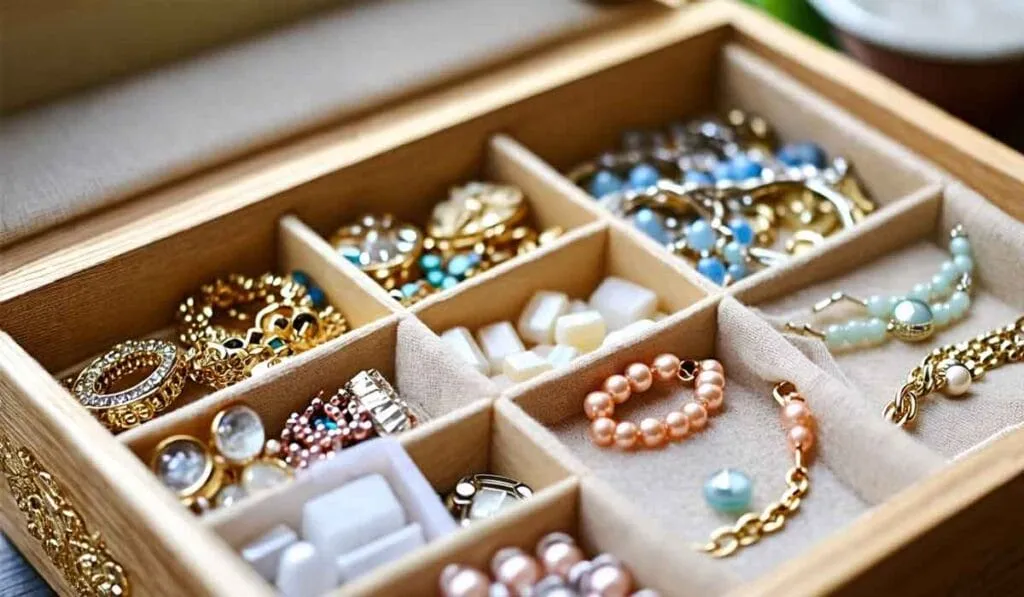
Jewelry can lose its shine if not stored correctly. Keeping it safe involves a few careful steps.
- Use individual compartments: Store each piece in its own spot to stop scratches. A jewelry box with dividers is great for this.
- Avoid moisture: Keep your items dry. Moisture leads to tarnishing and damage. Use silica gel packs inside the storage area.
- Line with soft fabric: Line drawers or boxes with soft cloth or velvet. This protects against scratches and other harm.
- Store in a cool place: Extreme temperatures hurt jewelry. Store it at room temperature, away from direct sunlight.
- Secure clasps before storing: Always fasten clasps on necklaces and bracelets before putting them away to prevent tangling.
- Keep away from chemicals: Harsh chemicals like bleach can ruin your jewelry’s finish. Make sure your storage area is free of any exposure.
Common Mistakes to Avoid
Using the wrong cleaning agents can harm your jewelry. It’s crucial to steer clear of harsh chemicals and choose a gentle jewelry cleaning solution instead.
Using harsh chemicals
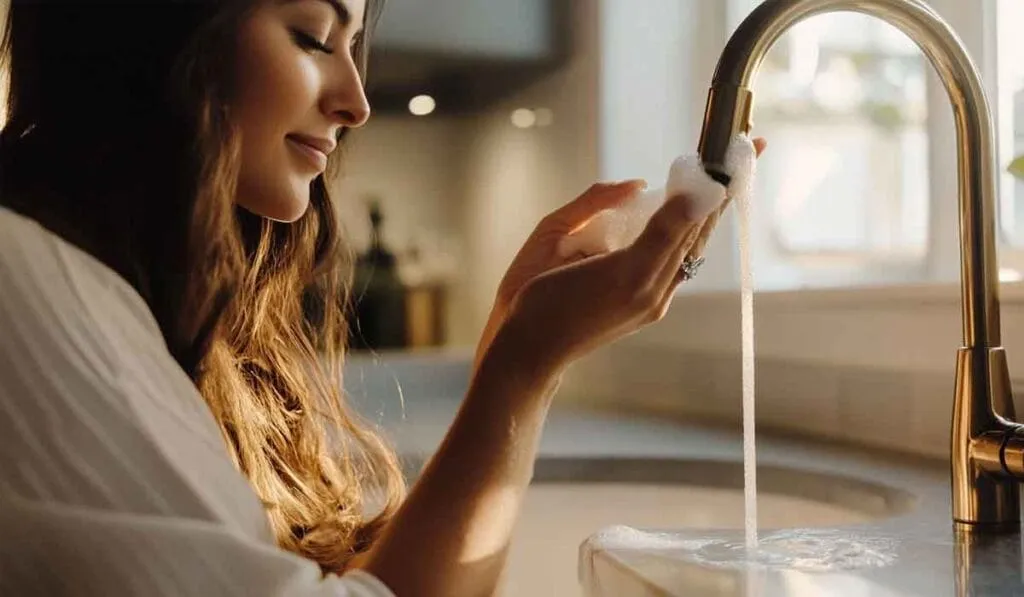
Avoid using harsh chemicals on your fine jewelry.
These substances can damage metals and weaken precious stones.
They strip away protective coatings, causing dullness and discoloration.
Instead of baking soda or strong cleaning agents, use a mild dish soap solution to clean jewelry.
It’s safer for delicate pieces and ensures longevity without the risk of harm.
Exposing jewelry to extreme temperatures
Harsh chemicals aren’t the only enemy of your fine jewelry.
Extreme temperatures can spell trouble, too.
Heat or cold can warp metals and cause gemstones to crack.
Store jewelry in a cool, dry place. Avoid leaving it near heaters, windowsills, or air conditioners.
Opt for a drawer or special jewelry storage box for safety.
This keeps your treasures looking their best and prevents unexpected damage from temperature changes.
Conclusion
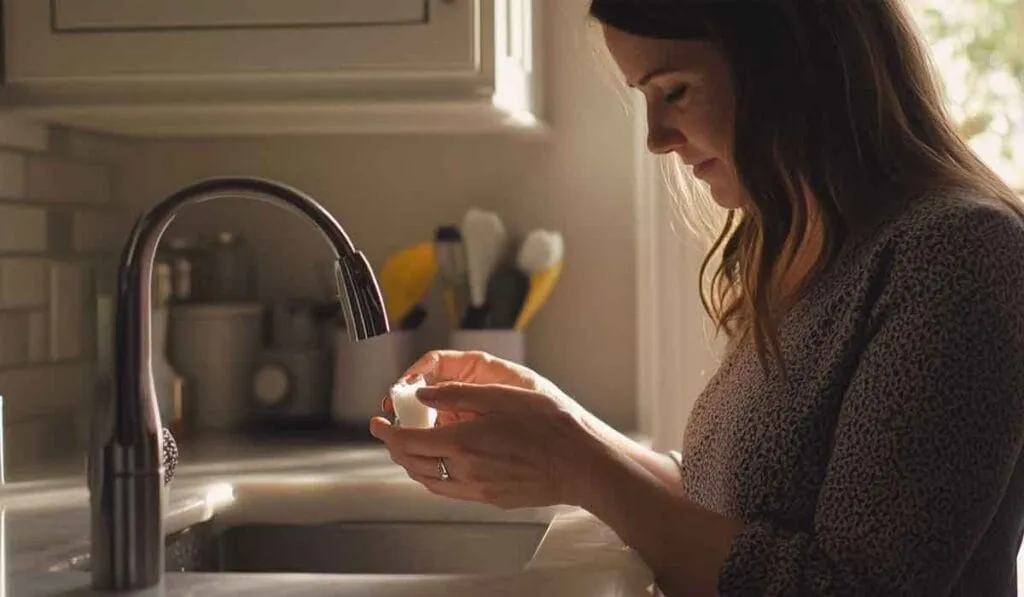
Cleaning and maintaining your fine jewelry at home doesn’t have to be hard.
With simple tools like mild dish soap and a soft brush, you can keep your treasures sparkling.
Regular care extends the life of each piece, making them shine longer.
Avoid common mistakes like using strong chemicals or exposing jewelry to heat.
Keep these tips in mind, and you’ll always look dazzling!
FAQs
1. How should I clean my fine jewelry at home?
To clean your fine jewelry, use a mixture of warm water and mild dish soap. Gently scrub with a soft toothbrush. Rinse well and pat dry.
2. Can I use household cleaners on my jewelry?
Avoid using harsh household cleaners like bleach or ammonia. They can damage the metal and stones in your jewelry.
3. How often should I maintain my fine jewelry?
Regular maintenance is key to keeping your jewelry looking its best. Clean it every few weeks and check for loose settings or damaged clasps.
4. What’s the best way to store fine jewelry at home?
Store each piece separately in a soft cloth pouch or lined box to prevent scratches and tangles. Keep them away from direct sunlight and extreme temperatures.




